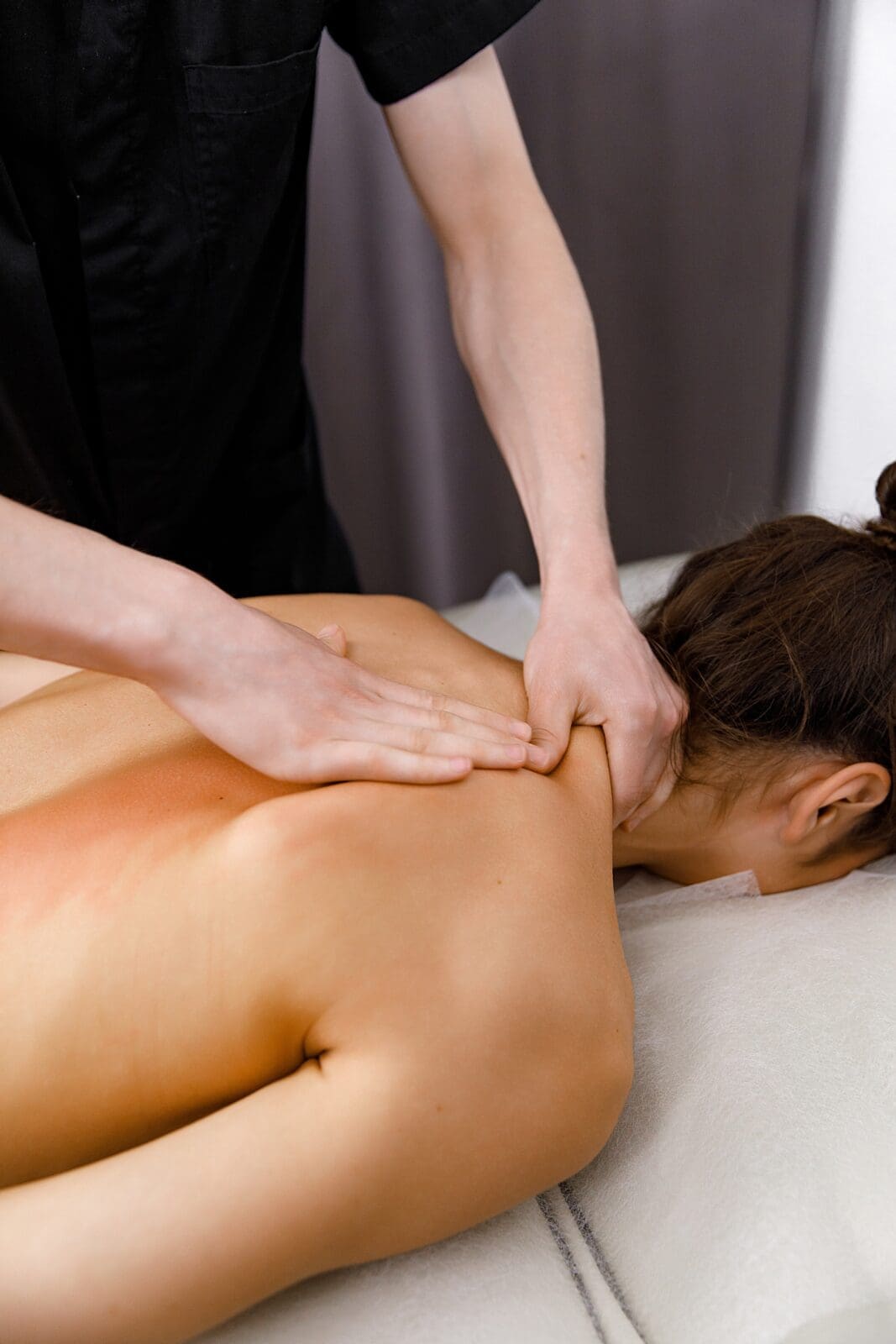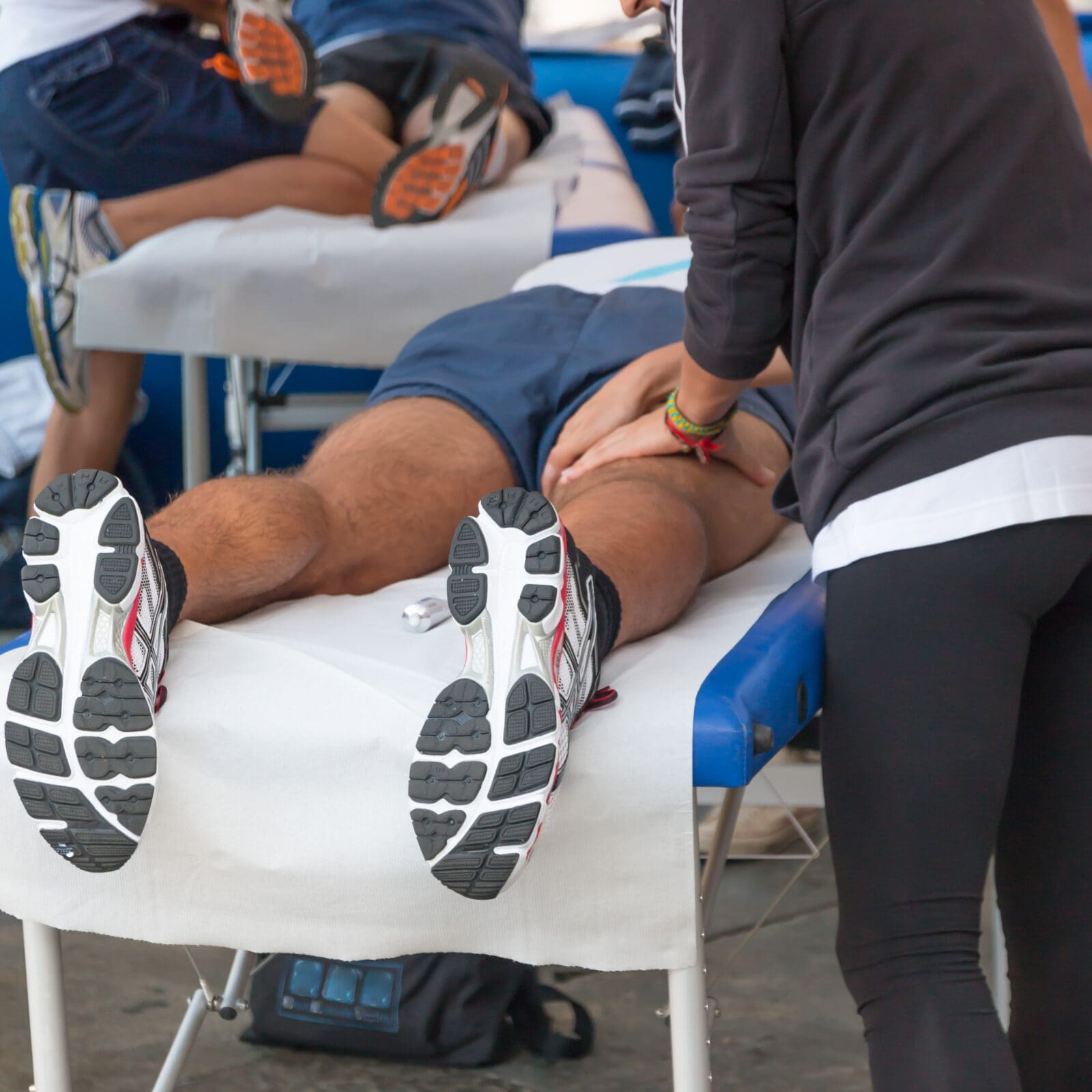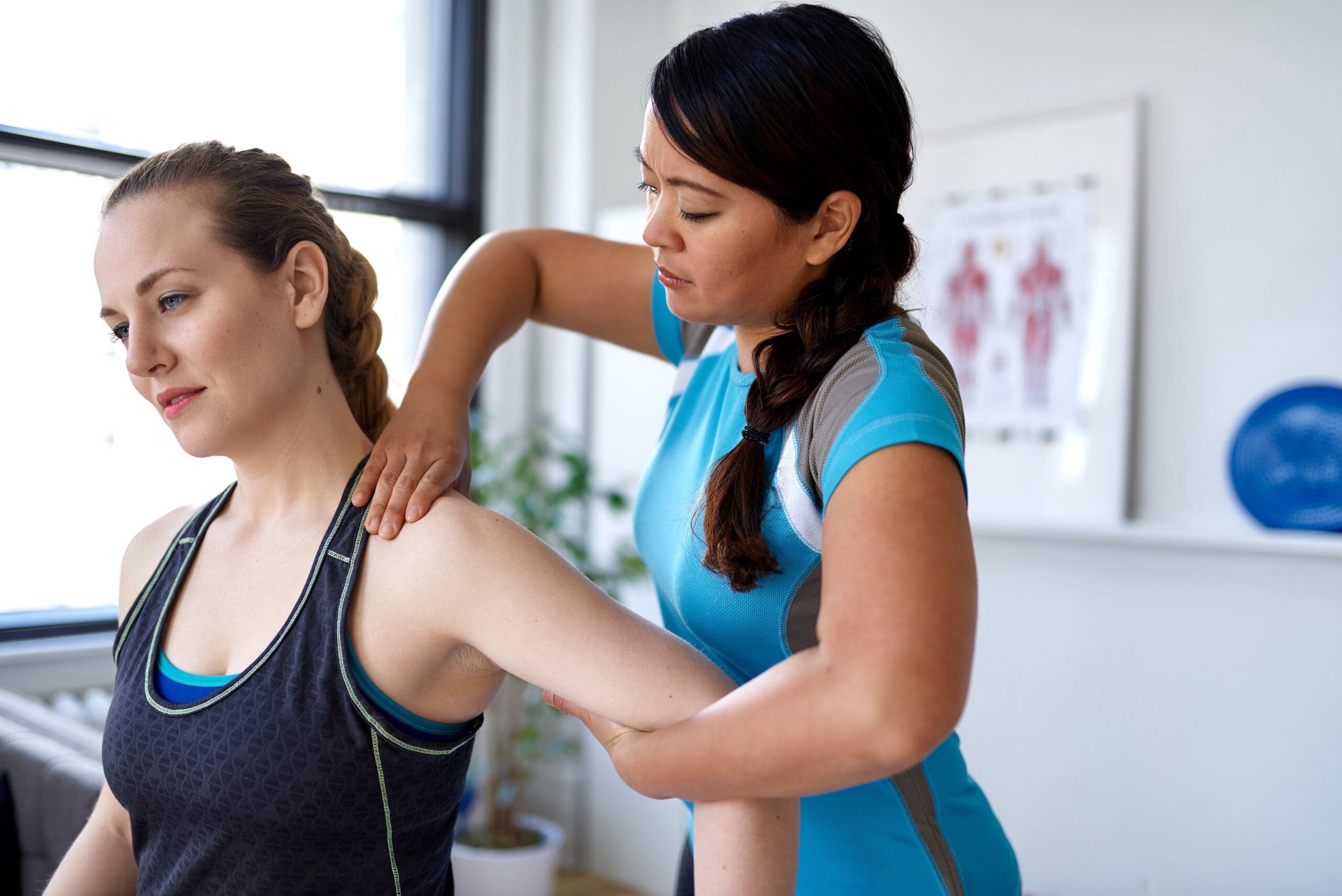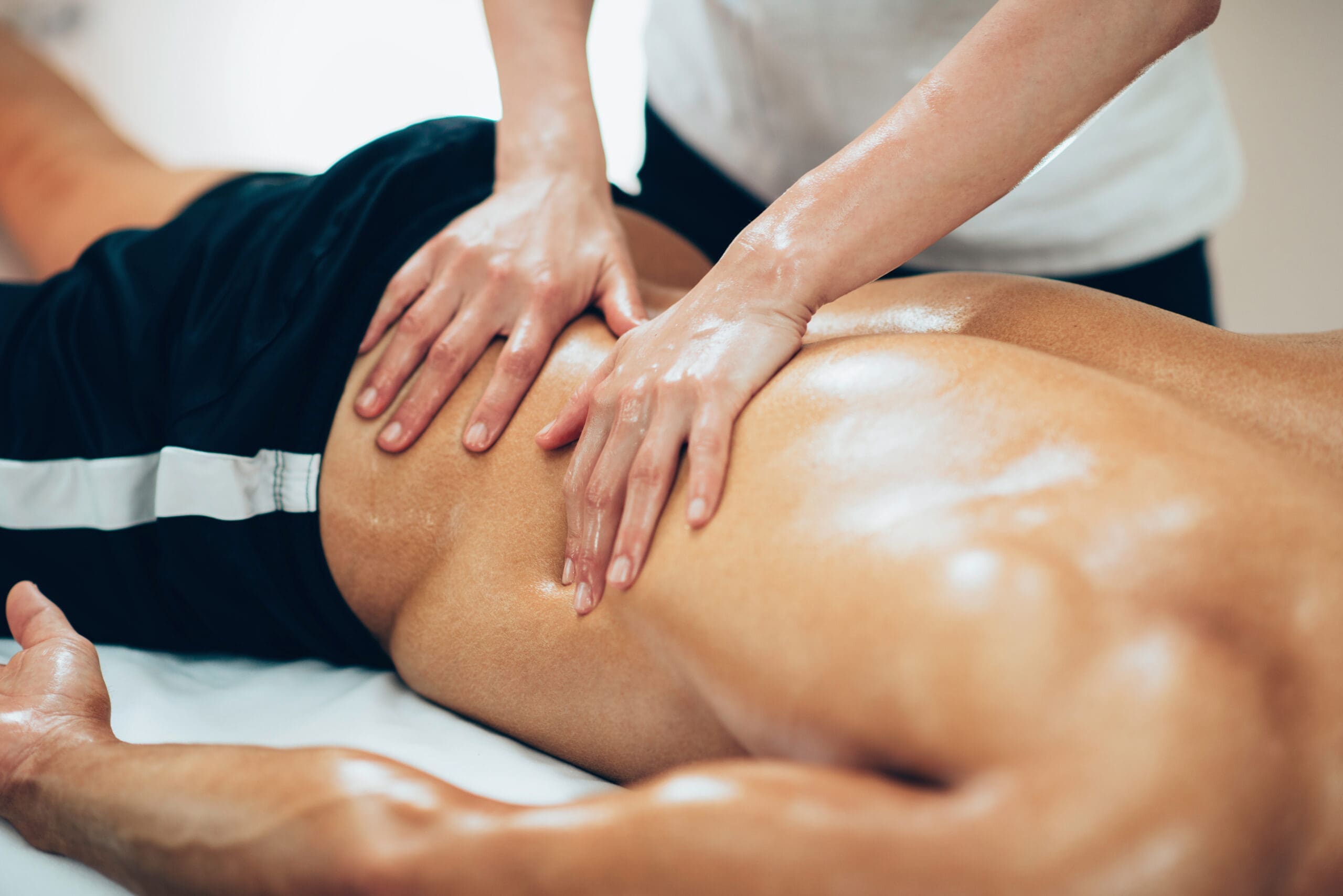Sports Massage Therapist CV Guide
Everything you need to know about getting the perfect Sports Massage Therapist CV
A sports massage therapist is a trained professional specialising in preventing, diagnosing and treating muscle-related injuries and discomfort, particularly for athletes and active individuals. They use deep tissue massage, trigger point therapy, stretching and other techniques to improve circulation, flexibility and recovery.
When employers recruit a sports massage therapist, they will look for individuals with relevant qualifications, strong interpersonal skills, physical fitness, injury prevention knowledge, good communication, experience with athletes and professionalism. Therefore, if you want to apply for a new sports massage therapist job, you want to demonstrate to potential employers that you have the necessary expertise to excel in the role, which you will achieve by sending a well-crafted curriculum vitae (CV).
Writing an outstanding sports massage therapist CV involves highlighting your qualifications, experience and key skills relevant to the position and tailoring the content to the job advertised. Think of it as an introduction to who you are and what you can offer to
the organisation. When it is well-written, it will help employers assess your suitability for the role and whether you would be a good fit for their business.
In this article, we will provide guidance on how to write a sports massage therapist CV, what to include, some tips and an example to help you get started. It will hopefully increase your chances of securing an interview and, ultimately, the job.
In this Sports Massage Therapist CV guide
What to include in a Sports Massage Therapist CV
What you will include in your CV will depend on your professional background and preferences. However, carefully preparing and considering what to add can maximise your chances of getting an interview invite.
The first thing to do is review the job description and identify the credentials the employer wants candidates to possess. You can then pick out your most relevant qualifications, experiences, skills and achievements to include so your CV is aligned with the job description. Once you have done this, you can think about the structure of your CV.
Most CVs have main sections – contact information, professional summary, education, work experience, key skills, achievements and references. You can divide your CV into these sections and focus on them one at a time, making the task more manageable. Let us now look at this in more depth.
Contact information
Your contact information is the first section in your CV, located at the top of the document, usually in bold, larger text size. It is crucial to add accurate and current contact details so potential employers can easily reach you.
There are some do’s and dont’s regarding what to include in the contact information section, for example:
- Do include:
- Full name – clearly state your name, optionally followed by your professional title (e.g. Sports Massage Therapist).
- Location – include your town, city or county.
- Phone number – provide a reliable number where employers can easily reach you. Ensure your voicemail also sounds professional (if you have one).
- Email address – use a professional email address. Avoid adding one with nicknames or overly casual handles.
- LinkedIn profile or own website (optional) – only include links if updated and relevant.
- Don’t include:
- Excessive personal details – omit sensitive information, such as your full home address, age, date of birth, marital status, gender, religion, national insurance number or any details irrelevant to your professional qualifications.
- Unprofessional social media profiles – only include social media links if they add professional value. Otherwise, exclude personal or unprofessional accounts.
- A photo – avoid adding any photos unless the job posting asks for them.
Keeping your contact information section succinct and focused ensures that potential employers immediately see how to connect with you without getting distracted by extraneous personal information.
Professional summary
A professional summary (aka a personal statement, executive summary, professional statement or career profile) in a CV is a concise, attention-grabbing section at the top of the document (under your contact information). It provides a snapshot of your qualifications, skills, experiences and career highlights – tailored to the job you are applying for. The goal is to give potential employers a quick overview of why you are an ideal candidate, encouraging them to read the rest of your CV.
A well-crafted and engaging professional summary is vital, as it will typically be one of the first things potential employers will read on your CV and sets the tone for the whole document. It serves as a good first impression, differentiating you from other applicants and prompting readers to explore your CV further.
Typically, a professional summary is about 3–5 sentences long and should convey your specialised skills, relevant certifications and experience working with athletes or clients suffering from sports-related injuries. Here are some examples of elements to consider including:
- Professional title and specialisation – clearly state your role as a sports massage therapist and any specific expertise, such as rehabilitation, injury prevention or performance enhancement. Begin your paragraph with a strong action verb, e.g. experienced, dedicated, passionate, competent, etc.
- Years of experience – indicate how long you have been practising and, if possible, highlight diverse settings you have worked in, such as sports clinics, teams or private practices.
- Qualifications – mention your credentials, such as NVQ Level 3 or 4 in Sports Massage Therapy, membership with professional bodies (e.g. The Association for Soft Tissue Therapists) or additional training relevant to the field.
- Key techniques and methods – specify your proficiency in techniques such as deep tissue massage, myofascial release and trigger point therapy, emphasising your ability to tailor treatments to individual needs.
- Client focus and outcomes – highlight your approach to client care, including conducting assessments, designing bespoke treatment plans and achieving measurable results like improved recovery times or enhanced performance.
- Soft skills and professional attributes – illustrate qualities like reliability and excellent communication skills. If you work in team environments, mention your collaborative skills and adaptability.
- Passion and commitment – reflect your dedication to the industry, helping clients achieve peak physical performance and your ongoing pursuit of professional development and industry knowledge.
Remember to tailor your professional summary to each sports massage therapist position. Here is an example:
“Experienced Sports Massage Therapist with 5+ years of expertise in injury treatment and performance enhancement. Skilled in deep tissue and myofascial techniques, delivering tailored care to clients. NVQ Level 4 certified and committed to achieving measurable recovery results. Proven success in reducing muscular tension and improving recovery times. Passionate about advancing client well-being through innovative therapies.”
Education
Your CV should also have an education section where you list your academic qualifications and any relevant training or certifications you have completed. It gives potential employers insight into your educational background and how it aligns with the role you are applying for.
Your education section can go after your professional summary or work experience. If you have recently qualified as a sports massage therapist and have limited direct work experience, it may be worth adding your education first. Here are some pointers on what to include in this section:
- Qualification name – give the degree, diploma or certification title, e.g. Bachelor of Science in Physiotherapy.
- Institution name – state where you studied, like the university, college, school, academy or training provider.
- Dates attended – indicate when you started and completed the program, e.g. Month/year.
- Achievements – highlight relevant accomplishments, like graduating with honours or excelling in specific coursework.
- Certifications and training – include additional relevant certifications, workshops or professional training, e.g. NVQ in Sports Massage Therapy.
Work experience/employment history
The work experience section on a CV is also known as your employment history. It is where you list your previous professional roles to show your skills and accomplishments. As mentioned, add it before or after the education section.
A well-written work experience section is essential, as it provides tangible evidence of your qualifications, skills and career progression. Employers want to see how your past experiences align with the sports massage therapist role they are hiring for. This section highlights your career journey and demonstrates your suitability for the position.
In this section, you will typically include the following:
- Job titles – clearly state your previous roles, e.g. “Sports Massage Therapist”.
- Organisation names – mention the clinics, sports teams, gyms, wellness centres or other establishments where you worked. Employment dates – provide the duration of your employment for each role (month/year).
- Responsibilities – highlight the specific tasks you performed, such as conducting assessments to identify muscle tension or injuries, providing pre/post-event massages to athletes, developing personalised treatment plans or educating clients on injury prevention and recovery techniques. Add your duties in bullet point form and aim for three to five examples.
- Specialisations – highlight techniques like deep tissue massage, trigger point therapy or myofascial release.
- Achievements – showcase accomplishments, such as successfully rehabilitating athletes from injuries, contributing to improved performance or recovery times for clients, building a loyal client base or receiving positive feedback.
- Collaboration – mention working with physiotherapists, trainers, or other healthcare professionals to provide holistic care.
An engaging work experience section creates a solid first impression and makes it easier for employers to envision you contributing to their team. Also, tailoring this section to the specific sports massage therapist job can make your CV stand out, showing that you have carefully considered aligning your experiences with the employer’s needs.
Here is an example of how you can add your work experience:
Work Experience
Sports Massage Therapist. Elite Performance Clinic. London. January 2022 – Present.
- Conducted pre- and post-event massages for professional athletes to enhance performance and recovery.
- Developed personalised treatment plans addressing sports injuries, muscle tension and mobility issues.
- Specialised in deep tissue massage, trigger point therapy and myofascial release techniques.
- Collaborated with physiotherapists and trainers to provide holistic care for clients.
- Achieved a 30% increase in client retention through exceptional service and tailored treatments.
Key skills and achievements
You can incorporate key skills and achievements in your work experience section or include them separately. They are crucial in your CV because they showcase your abilities and highlight your accomplishments. They help employers quickly understand how you can bring value to their organisation.
Key skills are specific abilities or proficiencies demonstrating your capability to perform tasks and succeed in sports massage therapy. They can be broadly categorised into two types:
- Hard skills – are technical, job-specific abilities often measurable or teachable and learned through education, training or practice. Some examples of hard skills for a sports massage therapist include assessment, various massage techniques, anatomy and physiology knowledge, treatment planning, sports injury management, use of equipment, etc.
- Soft skills – are interpersonal and behavioural traits that influence how you interact with others and handle tasks. They are trickier to measure but equally vital. Some examples of soft skills for a sports massage therapist include communication, empathy, adaptability, problem-solving, team collaboration, time management, etc.
You should combine hard and soft skills in your CV to make it compelling and give a comprehensive picture of your abilities. It will also increase your chances of your CV getting noticed, as many organisations use Applicant Tracking Systems (ATS) to screen CVs. Therefore, incorporating skills mentioned in the job description in your CV can increase your chances of passing ATS filters and standing out to employers.
Achievements are accomplishments or milestones you have reached through your work, education or personal efforts. They showcase your ability to excel and create positive outcomes. We will look at how to focus on your achievements later.
Other information
You may find that you have other relevant information you want to add to your CV but are unsure where to add it. You can add extra sections if you think it will help your CV stand out from other candidates and increase your chances of getting that all-important interview invite. Here are some examples of additional ones you could add:
- Certifications – you could keep your certifications separate from your formal education section and include any relevant sports massage therapy certifications or first aid training.
- Specialised training – if you have undertaken specific courses or workshops, e.g. injury rehabilitation, kinesiology taping or advanced massage techniques, showcase them.
- Professional memberships – list organisations you are affiliated with, like the Association for Soft Tissue Therapists or equivalent.
- Volunteer work – you could include a separate section for volunteering if you have volunteered at sporting events or in community health programs, as it demonstrates experience and dedication.
- Client testimonials – if appropriate and relevant to your experience, you can include snippets of positive feedback and testimonials from clients (check with them for permission).
- Languages – if you speak multiple languages, highlight them, as it is useful when working with diverse clients or international athletes.
- Hobbies – perhaps have a section for relevant interests that align with the role, such as sports you participate in, yoga, or fitness activities, which emphasise your passion for health and wellness.
- Portfolio – for certain roles, adding a portfolio section with details about significant projects, events, or collaborations (like working with a sports team) could be impactful.
If you add additional sections, ensure they are relevant and tailored to the sports massage therapist. They should add value to your CV and not make it cluttered or difficult to read.
References
The final section found in most CVs is the reference section. It is where you choose two or three individuals (referees), e.g. former employers, supervisors or colleagues, who can vouch for your skills, work ethic and character.
Having strong and relevant referees is crucial, as they provide prospective employers with insight into your work style and can give them a clearer idea of how you operate professionally. They also reassure them about your abilities and reliability and provide them with an external validation of your qualifications and work history.
If the job description does not request specific referee details, add a simple statement under the section heading, “References available upon request”. If you do add referee details, include the following:
- Full name – write the referee’s name clearly.
- Job title and organisation – mention their professional title and the company or organisation they are associated with. For instance, “Clinic Manager at XYZ Wellness Centre”.
- Relationship to you – indicate how you know this person, such as “Supervisor”, “Manager” or “Colleague”.
- Contact information – include their phone number and email address, ensuring you have their consent.
Remember to gain the referee’s permission before sharing their contact details. You can also give them details of the job you are applying for so they can tailor their reference accordingly.
Tips for writing a Sports Massage Therapist CV
We have covered some of the main sections in a CV and suggestions on what to include. It is also vital to ensure it is professional-looking, clear and engaging to catch potential employer’s eyes and encourage them to read through it. Here are some general tips to help you craft an outstanding CV:
- Customise your CV – tailor your CV for every job application and highlight your qualifications, experiences, skills and achievements that match the specific sports massage therapist role.
- Keep it clear and concise – a CV should ideally be no longer than two pages. It should be easy to read and only include information relevant to the specific sports massage therapist job.
- Be honest – only include credentials you possess on your CV; do not embellish or lie. Employers will typically find out, and it can have serious consequences.
- Use action-orientated language – use strong action verbs like achieved, developed, led, or initiated to describe your achievements. Avoid overused clichés, such as “hardworking” or “team player”, as these are vague and lack specificity.
- Use professional and consistent formatting – you can help your CV stand out by:
- Using a clean, professional layout with clear sections, headings and bullet points. Avoid long paragraphs.
- Using professional, simple and clear language, avoiding slang or overly casual expressions.
- Using the same tense throughout your CV. Typically, past tense is used for previous jobs, and present tense is used for your current role.
- Avoiding excessive use of fancy designs, colours and fonts.
- Sticking to a simple font like Arial, Calibri or Times New Roman and consistent size, e.g. 10-12 points.
- Ensuring your CV has adequate spacing to make it more visually appealing.
- Avoiding using personal photos, as it can distract and lead to bias.
- Using a digital format where possible. Save and send your CV as a PDF to ensure the formatting stays intact when viewed on different devices.
- Add a touch of personality – while the content should be professional, injecting a bit of personality can give potential employers insight into who you are. Just keep it relevant and positive to maintain a professional tone.
- Update regularly – a CV is a living document. Regularly update it with new qualifications, skills, experiences, achievements and career goals to keep it current and reflect your professional journey.
- Check your CV before sending – proofread carefully to check for any mistakes, as errors can quickly detract from an otherwise impressive CV. Review your document several times, and if possible, have someone else review it. Typos or inconsistencies can leave a poor impression on potential employers.

Focus on achievements
When you add achievements to your CV, you include specific accomplishments or successes demonstrating your skills, capabilities and contributions in your previous roles or experiences. They highlight the value you bring to employers by showing the impact of your work and concrete evidence of results rather than just listing your duties or responsibilities.
Adding achievements to your CV is essential because it helps you stand out from other candidates with similar credentials. They show how you have made a difference in previous roles. Overall, it can make your CV more engaging and compelling.
You can focus on your achievements in many ways, and here are some pointers to help:
- Include in a separate section – if you have many stand-out achievements, you could add them to a separate section and place the most impressive ones at the top. Alternatively, you could weave them into your work experience alongside your skills.
- Identify your most impressive achievements – reflect on the duties you performed in your previous jobs, education or even volunteer work and consider instances where you went above and beyond expectations or made a difference. Focus on the results of your actions, for example:
- Did you help athletes recover faster from injuries?
- Did your treatments lead to improved performance, faster recovery times or fewer injuries?
- Have you effectively used specialised skills?
- Have you introduced new ideas, methods, or events that made a difference?
- Did your additional training contribute to better results?
- Have you collaborated with other professionals to improve outcomes for teams or clients?
- Have clients or employers praised your work?
- Have you received awards or positive reviews?
- Use the STAR method to frame your achievements
- Situation – briefly describe the context, e.g. “A local football team needed a solution for recurring muscle tightness affecting performance”.
- Task – explain your responsibility, e.g. “Developed a specialised massage treatment to aid recovery and reduce injury risk”.
- Action – highlight what you did, e.g. ” Introduced a tailored deep tissue massage plan, combining stretching techniques and trigger point therapy”.
- Result – share measurable outcomes, e.g. ” Reduced muscle tension by 40%, leading to improved player mobility and faster post-match recovery”.
- Quantify your success – use numbers, percentages and other metrics to make your achievements more impactful. For example, rather than just stating you provided massages, demonstrate how your work improved an athlete’s recovery or performance, i.e. “Improved recovery times by 20% for university athletes through tailored deep tissue and trigger point therapy techniques”.
- Use action-oriented language – begin each achievement with strong action verbs to make your impact clear and compelling, e.g. Supported, helped, initiated, led, developed, achieved, performed, managed, improved, etc.
Remember to include your most relevant achievements that align with the sports massage therapist role you are applying for.
By focusing on these areas, you can uncover meaningful accomplishments showcasing your skills and impact. Achievements do not have to be grand; they just need to highlight how your work has benefited others or contributed to professional success.
Describe your experience
Experience refers to your previous work history, internships or relevant activities that have helped develop your knowledge, skills and abilities in sports massage therapy or related fields.
It is essential to describe your experience effectively on your CV, as it demonstrates your ability to apply skills in real-world situations. It provides evidence of your accomplishments, reliability and suitability for the role you are applying for. Employers use this section to evaluate your career progression, industry knowledge and how your past roles align with the job. Well-presented experience can set you apart and give employers confidence in your ability to succeed.
Describing your experience involves identifying your most relevant past contributions and providing sufficient (but concise) information to allow the reader to understand how you align with the job. You will typically do this in two main sections of your CV – your professional summary and work experience.
- Professional summary – in this section, you will describe your experience concisely, highlighting your years of experience, skills, accomplishments and unique value. Tailor it to the position and briefly tell the reader what makes you the perfect candidate for the role.
- Work experience – here, you will describe your experience by listing your previous job titles, employers and dates. You should use bullet points to briefly describe your key responsibilities and achievements, focusing on results and specialised skills to show your impact.
You may be in a situation where you have recently qualified and have limited direct experience in a sports massage therapist role. If this is the case, do not worry. You can still effectively describe your experience by concentrating on transferable skills and related activities that emphasise what you have done and your capabilities rather than solely your professional history. Here are some examples of how to achieve this:
- Highlight relevant education and training – clearly list your massage therapy qualifications and any specialised sports massage courses, workshops or seminars you have attended. Highlight any practical projects or case studies from your training program that showcase your hands-on experience in treating sports-related injuries.
- Emphasise transferable experience – if you have held positions in gyms, wellness centres or similar environments, showcase tasks that mirror sports massage therapy responsibilities, such as client communication, customer service, problem-solving, basic therapeutic techniques and teamwork.
- Include volunteer roles – list any volunteer positions where you applied your massage techniques at local sports events or community centres. Detail what you did and the impact (e.g. “Provided recovery massages at local sports events, improving athlete performance”). You could even include informal experiences, such as practising various techniques on friends and family.
- Add internships/clinical placements – if you have practised massage techniques during your training, include them. Even a short-term internship can provide valuable experience. For example, if you assisted a senior therapist, describe how you supported treatments or observed client recovery strategies.
- Include relevant hobbies – focus on hobbies that align with the field or demonstrate relevant qualities. Some examples include health, fitness and wellness, team sports, organising wellness events, blogging or vlogging and continuous learning in therapy and anatomy.
- Tailor your professional summary – express passion for the profession and eagerness to expand your expertise in your professional summary, for example, “Recent graduate with certification in sports massage therapy and a solid foundation in anatomy, physiology and therapeutic techniques. Completed extensive hands-on training during clinical placements, mastering skills in deep tissue, trigger point and myofascial release techniques. Known for strong communication, attention to detail and a passion for enhancing recovery and performance. Eager to leverage academic learning and practical training to contribute to a dynamic sports wellness environment.”
This approach shifts the focus from a perceived lack of direct experience to your proactive attitude, relevant academic background, and practical skills. It shows employers you are dedicated, knowledgeable and ready to learn.

Tailor your CV to the Sports Massage Therapist position
We have talked about tailoring your CV a few times already, and it essentially means customising it to fit the specific sports massage therapist job you are applying for. Instead of sending out a generic CV, you emphasise your most relevant skills, experiences and achievements and align them with the job description and employer’s needs.
Tailoring your CV is crucial. It shows you have researched the role and are genuinely interested in the job. It also helps potential employers quickly see why you are the right candidate and can differentiate from other applicants who only send a generic CV. A customised CV makes a stronger impression, as it feels more personal and targeted and can increase your chances of passing ATS filters and getting an interview.
Here are some examples of how you can tailor your CV to the sports massage therapist position:
- Carefully read the job description – it goes without saying that to ensure your CV matches the position, you must scrutinise the job description to identify what the employer wants candidates to have. Identify the key qualifications, skills, experience
- and techniques mentioned. You can then reflect on your academic and professional history and align your credentials with their requirements.
- Research the organisation – what will look really impressive on your CV is if you incorporate some of the same language the organisation uses when referring to its goals, ethos, values and mission statement. Look at their website and social media pages to see what you can include in your CV and cover letter to show you have really done your homework.
- Look for keywords – as you read through the job posting, identify keywords or phrases used, especially relating to hard and soft skills, such as “injury prevention” or “rehabilitation support”. It can help your CV stand out and also pass ATS filters.
- Review and adjust various sections in your CV – there are several ways to achieve this, for example:
- Customise your professional summary to align with the role, highlighting qualifications, skills, experience, passion and career goals specific to sports massage therapy. Mention the job title and the company name to show you have tailored your CV to this position or organisation.
- Tailor your work experience and focus on responsibilities and achievements directly relevant to the job. If you have experience in similar roles, emphasise transferable skills, especially if they relate to client care, wellness or sports recovery. Remove or minimise unrelated roles.
- Include relevant hard and soft skills, for example, if they mention proficiency in injury prevention, deep tissue massage and client communication, match your skills directly to these requirements.
- Include relevant certifications, training or professional memberships in your CV if mentioned in the job description and if you hold them.
- Add, remove or reorder main sections where necessary and do not be afraid to adjust your CV structure to align with the role.
- Do not forget to tailor your cover letter – address the recruiter, mention the company name and reference the job role. Focus on aligning your skills, experiences and achievements with the job description. Highlight why you are a good fit and express enthusiasm for the position and organisation. Use examples from your CV to support your claims and detail what makes you the best fit.
Customising your CV for every job application and aligning your content can help it stand out amid a sea of generic CVs. It increases your chances of impressing potential employers and getting that all-important interview invite.
Good luck!



